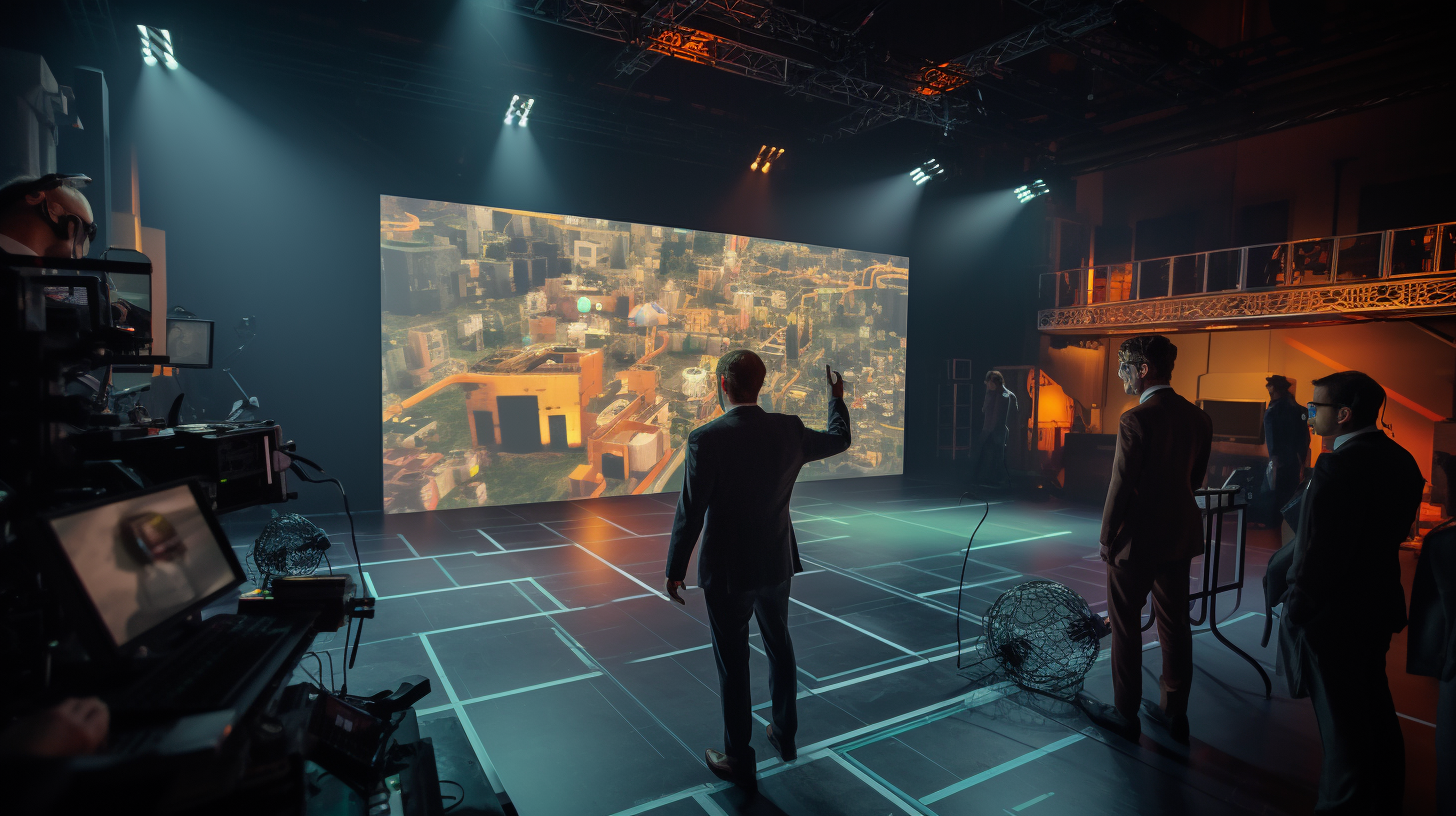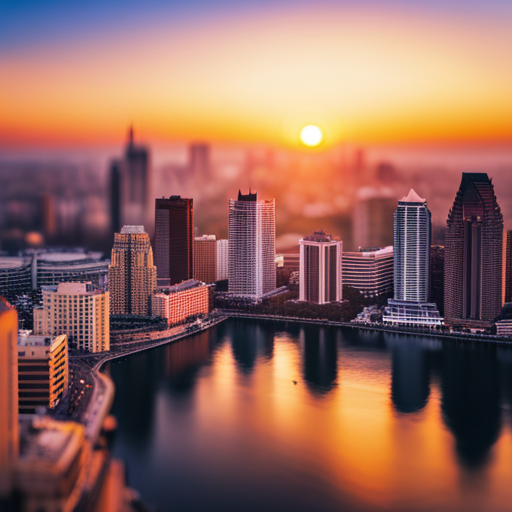We’re excited to take you on a journey into the world of video production! As a team of experienced videographers and editors, we know the ins and outs of the entire process from start to finish.
From planning and preparation to the final product, we want to share our knowledge and passion for video production with you.
Video production is a multifaceted art form that requires careful planning, creativity, and collaboration. It’s not just about pressing record and hoping for the best.
In this article, we’ll explore the different phases of video production, including pre-production, production, and post-production. We’ll discuss tips and tricks for crafting a compelling narrative, and the importance of teamwork in the collaboration process.
Whether you’re an aspiring filmmaker or simply interested in learning more about the video production process, we hope this article inspires you to explore the world of video production.
The Pre-Production Phase: Planning and Preparation

Before filming can begin, it’s essential to nail down all the details during the pre-production phase. This phase involves careful planning and preparation to ensure that the final product meets the desired outcome. One of the critical aspects of pre-production is budgeting constraints. This involves determining how much money is available and how to allocate it effectively. This process helps to identify potential cost overruns and eliminate any unnecessary expenses.
Another important consideration during the pre-production phase is location scouting. This involves identifying and securing suitable filming locations that align with the vision of the project. The process of location scouting involves visiting potential sites, assessing their suitability, and negotiating any necessary permits or agreements.
By carefully planning and preparing during the pre-production phase, video production teams can minimize the risk of unexpected challenges and ensure a successful outcome.
Lights, Camera, Action! The Production Phase

During the production phase, it’s crucial to ensure that the lighting, camera angles, and actors’ performances all work together seamlessly to create the desired effect.
To achieve this, the set design needs to be carefully considered. The set should be designed to reflect the mood and tone of the video, and should be visually appealing. It’s important to ensure that the set is not distracting and does not take away from the actors’ performances.
Another important aspect of the production phase is wardrobe selection. The wardrobe should also reflect the tone and mood of the video, and should help enhance the actors’ performances. It’s important to ensure that the wardrobe is not distracting and does not take away from the overall effect of the video.
Proper wardrobe selection can help bring the video to life and make it more engaging for the audience. Overall, attention to detail in all aspects of the production phase is key to creating a successful video.
Post-Production: Editing and Sound Design

After the cameras have stopped rolling, post-production is where the real magic happens, like a symphony conductor bringing all the instruments together to create a beautiful melody.
This is where the footage is edited, color-graded, and given its final touches before it’s ready to be shared with the world. The editing process involves selecting the best takes and arranging them in the right sequence to create a cohesive story.
Color grading is also an important part of post-production as it sets the mood and tone of the video. It can make a sunny day look gloomy or a nighttime scene look brighter and more vibrant.
Sound design is another crucial aspect of post-production. Foley effects are added to enhance the audio quality of the video. These include sounds like footsteps, rustling leaves, and door creaks that are recorded separately and then added to the video during editing.
Music selection and voiceover are also important aspects of sound design as they can enhance the overall emotional impact of the video. The right music track can make a scene more powerful and memorable, while a well-written voiceover can provide context and clarity to the story being told.
With all these elements combined, post-production is where the final product truly comes to life.
Crafting a Compelling Narrative

Crafting a compelling narrative means you can connect with your audience on a deeper level and keep them engaged throughout your story. One way to achieve this is through character development.
Developing strong and relatable characters can make your audience invest emotionally in your story. It’s important to make your characters feel like real people, with flaws, strengths, and unique personalities. This can be achieved through dialogue, actions, and reactions to different situations.
Visual storytelling techniques can also help to craft a compelling narrative. The use of imagery, camera angles, and lighting can create a mood or atmosphere that enhances the story.
For example, a dark and moody setting can convey a sense of danger or foreboding, while a bright and colorful setting can create a sense of happiness or excitement. The way you frame your shots can also convey meaning, such as a close-up on a character’s face to show their emotions or a wide shot to show the scale of a scene.
By using these techniques, you can create a visually stunning story that engages your audience and keeps them invested from beginning to end.
The Collaboration Process: Teamwork Makes the Dream Work

You’ll need to work closely with your team to ensure that your project is successful, but don’t worry, it’s worth the effort! Effective communication is key when collaborating with others.
Make sure that everyone is on the same page from the start. Define everyone’s roles and responsibilities, and establish clear deadlines. This will help to avoid misunderstandings and ensure that the project runs smoothly.
In addition, be prepared to make creative compromises. Everyone on the team will have their own ideas and opinions, so it’s important to be open to different perspectives. Listen to feedback and be willing to adapt your ideas.
Remember, the end goal is to create something that is both effective and engaging. By working together, you can combine your strengths and create something truly amazing.
Frequently Asked Questions
What are the legal requirements for filming in public spaces?
When filming in public spaces, we must obtain permits from local authorities and be mindful of privacy concerns. It is important to respect individuals’ right to privacy and obtain necessary permissions to avoid legal issues.
How do you deal with difficult actors or crew members?
Dealing with difficult actors and managing team dynamics can be challenging. We strive to create a positive and collaborative environment, but when conflicts arise, we address them quickly and professionally. Clear communication and a respectful approach can go a long way in resolving issues.
How do you ensure the safety of your cast and crew on set?
Creating a secure environment on set involves thorough safety checks, providing appropriate protective gear, and implementing emergency preparedness protocols. We prioritize the well-being of our cast and crew and ensure everyone is trained and informed on safety procedures.
What are some common mistakes to avoid when shooting a video?
To avoid a video shoot disaster, we’ve learned to prepare thoroughly. We’ve honed our tips and techniques through trial and error, investing in top-of-the-line equipment, perfecting lighting, and sound design.





